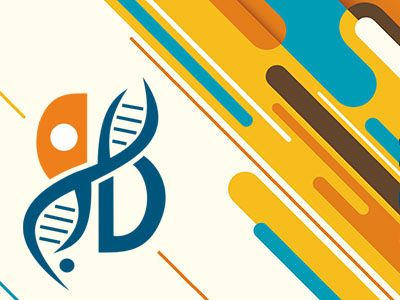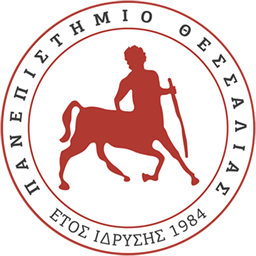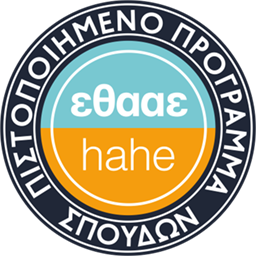General Chemistry for Biosciences

Theory: 4 hours/week | Practicals: 2 hours/week | ECTS Units: 6
Content – Aim of the course
This course is an introduction to the basic principles of chemistry, that form the scaffold for the better understanding of biochemical reactions. Students are introduced to the basic principles of atom structure and the modern quantum theories of the chemical bond. The types of intermolecular interactions and how these affect the behavior of various systems is also discussed. Finally, the course includes the study of various chemical equilibria between molecules and ions (ionic equilibria and redox reactions) and chemical kinetic data and chemical thermodynamics.
Analytical Description of the Course
- ATOM STRUCTURE: Fundamental components of the atom. Atomic nucleus. Isotopes. Rutherford and Bohr atom models. Modern quantum mechanicals of the atom. Schrödinger Equation. Quantum numbers. Atomic orbitals.
- PERIODIC TABLE OF ELEMENTS: Electronic structure and properties of atoms. Ionization potential. Electronegativity. Atomic radius. Metallic character.
- CHEMICAL BOND: Ionic bond. Quantum mechanical approach to covalent bonding. Molecular orbitals. Hybridization. Molecular geometry. VSEPR Theory. Dipole molecules. Metal bond.
- INTERMOLECULAR ATTRACTIVE FORCES: London Forces. Dipole-dipole forces. Hydrogen bond.
GASSES: ideal gas equation, Dalton Law, Diffusion and dialysis - LIQUID AND SOLID: Evaporation, vapor pressure, boiling and freezing point, sublimation, phase diagrams, types of crystalline solids, ionic, metallic crystals, X-ray diffraction by crystals.
- SOLUTIONS: Enthalpy of dissolution, solubility, solution concentration, vapor pressure, boiling and freezing points of solutions, osmosis, distillation, colloidal alloys
- CHEMICAL EQUILIBRIUM: reversible reaction, equilibrium constants, Principle of Le Chatelier.
- ELEMENTS OF CHEMICAL KINETIC AND CHEMICAL THERMODYNAMICS. Speed of reaction, reaction mechanism, equation rate and temperature catalysis. Enthalpy, entropy, Gibbs free energy, 1st, 2nd and 3rd law of thermodynamics, free energy and equilibrium constant.
- ACIDS AND BASES: Acids and bases by Bronsted-Lowry, and by Lewis. pK constants for acids and basse. pH. Buffers. Titration curves.
- OXIDATION – REDUCTION: Galvanic cells. Standard reduction potential. Nernst Equation. Electrolysis. electrochemical applications
- COMPLEX COMPOUNDS: Structure OF complexes, Isomers, valence bond theory, crystal field theory
Practicals
- Safety regulations at chemistry laboratories, reagents and utensils, preparation of solutions
- Measurement of pH.
- Buffers.
- Introduction to chemical analysis, acid-base neutralization, ionic properties of aminoacids
- Chemical balance
- Spectrophotometry, determination of the chemical balance constant
- Redox and oxidation
- Qualitative analysis
Assessment
The final grade consists of 80% from the final examination at the end of the semester and 20% from the lab practice.
Reading Suggestions
- Modern General Chemistry (10 International Edition), Darrell Ebbing, Steven Gammon
- Basic Inorganic Chemistry, Nikolaos Klouras
- Physicochemistry, Katsanos Nikolaos Α.
Teaching Material / E-class
Lecturers

Maria Kontou (Course Coordinator)

Georgios Papadopoulos

Persephoni Giannouli

Sotirios Marras






